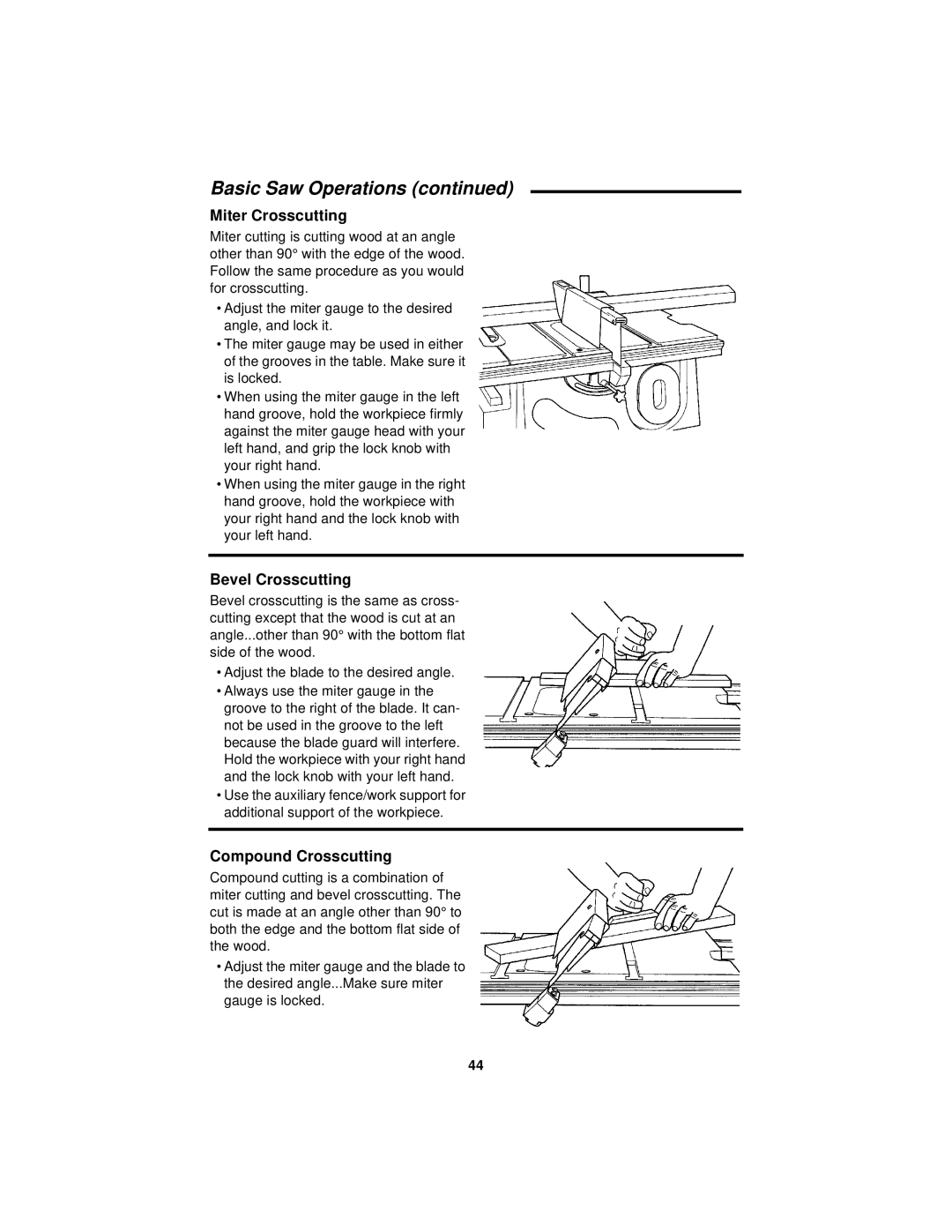
Basic Saw Operations (continued)
Miter Crosscutting
Miter cutting is cutting wood at an angle other than 90° with the edge of the wood. Follow the same procedure as you would for crosscutting.
•Adjust the miter gauge to the desired angle, and lock it.
•The miter gauge may be used in either of the grooves in the table. Make sure it is locked.
•When using the miter gauge in the left hand groove, hold the workpiece firmly against the miter gauge head with your left hand, and grip the lock knob with your right hand.
•When using the miter gauge in the right hand groove, hold the workpiece with your right hand and the lock knob with your left hand.
Bevel Crosscutting
Bevel crosscutting is the same as cross- cutting except that the wood is cut at an angle...other than 90° with the bottom flat side of the wood.
•Adjust the blade to the desired angle.
•Always use the miter gauge in the groove to the right of the blade. It can- not be used in the groove to the left because the blade guard will interfere. Hold the workpiece with your right hand and the lock knob with your left hand.
•Use the auxiliary fence/work support for additional support of the workpiece.
Compound Crosscutting
Compound cutting is a combination of miter cutting and bevel crosscutting. The cut is made at an angle other than 90° to both the edge and the bottom flat side of the wood.
•Adjust the miter gauge and the blade to the desired angle...Make sure miter gauge is locked.
44
